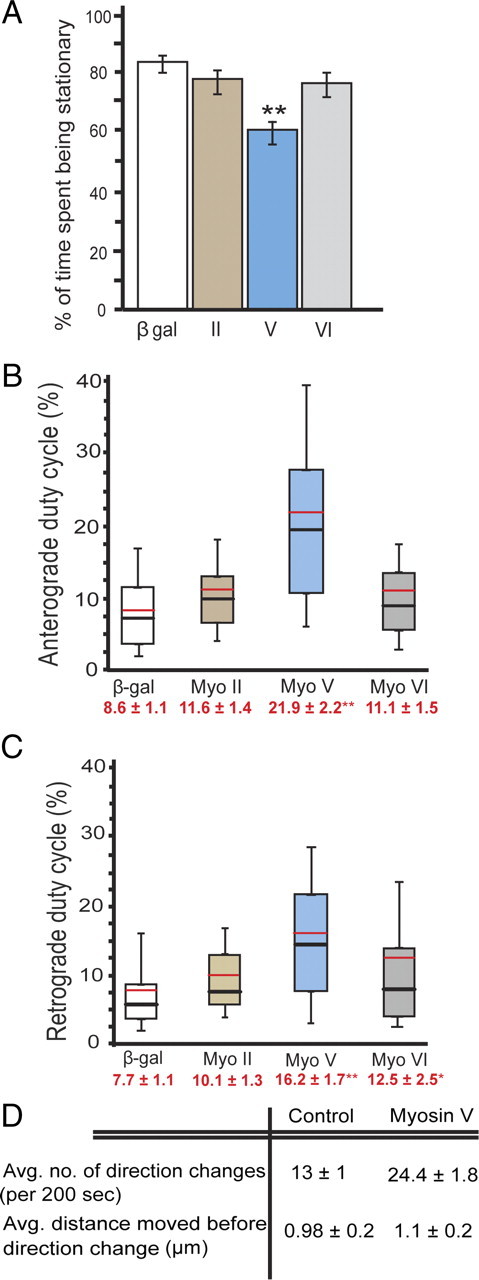Figure 4.

Myosin opposes mitochondrial transport, leading to increased stationary periods. During myosin V depletion, there is a significant decrease in the percentage of time mitochondria spent being stationary; **p < 0.05. (A). The mitochondrial duty cycles in the anterograde (B) and retrograde (C) directions are shown using box plots in which the black hash mark represents the median, the red hash mark represents the mean, the top and bottom of the box represent 25th and 75th percentiles, and the top and bottom error bars represent 10th and 90th percentiles. Mean ± SE are shown in red below the x-axis label for each treatment. The majority of mitochondria are mobile for longer durations during myosin V knockdown, and this effect is seen for both anterograde and retrograde directions. Myosin V knockdown in cells did not affect the ability of mitochondria to undergo direction changes (D). Average distances moved by the organelle between direction reversals were similar for control and myosin V dsRNA-treated cells. Myosin II knockdown did not affect either stationary phases or duty cycle. Data acquired from three experiments (β-gal control, n = 117 mitochondria/17 axons; myosin II dsRNA treatment, n = 69/11; myosin V dsRNA treatment, n = 74/11; myosin VI dsRNA treatment, n = 66/10).
